And so we have our last day of touring with the group. We stopped by at a totally fogged in viewpoint and a sort of neat historic watermill site before continuing on to a nice lunch on the water in Ponta Delgada. The restaurant was very close to the hotel that Paige and I will be staying at for an additional week to visit family, so we grabbed our suitcases and gave out hugs and took our leave. But we did have a few more adventures before we headed home…
The People - (no names)

This tour was conducted by a non-profit organization called “Road Scholars”. This is the same company that used to be “ElderHostel”. I think they changed their name to try and be inclusive of a younger crowd. On this particular outing they had 23 participants. We usually had along with us our tour leader, 2 local tour guide specialists, and our bus driver. Curiously enough, the driver seems to be the foil for many of the guide specialists' jokes but is also the hero in what seemed like daily “impossible driving situations”. These were situations where he would fit the big bus down extremely narrow old roads with illegally parked cars or perhaps cows.
.jpeg)
Of the 23 participants, there were 5 men (all with their wives). My wife was (by far) the youngest person on the tour and I was number 2. I was also the heaviest person on the tour. Despite what my recent doctor's notes say (“Mr Powell presents as a 66 year old obese male”), I don’t think I am that overweight. I am 5’11’’ and 215 lbs. I should probably convert that to metric. Anyway, my point is that everyone else is older and skinnier. A very fit crowd.
The oldest person on the tour had her 88th birthday on the tour. This was also her 48th Road Scholar tour. She went on every hike and powered right up those hills and always looked dapper and wonderful.
What else about us? I didn’t have a detailed conversation with everyone so my data may be off but….We were all white. Most of us were either retired or had jobs they had no intention of ever quitting. I was the only Engineer. There were many mental health professionals and teachers. One couple had a daughter that is a professor at MIT (they get special credit). We had people from Alaska and California and Florida and Virginia and Boston and Ohio and New York. Why do Boston and New York get the same ratings as a state? Unclear.
2 ladies were members of a Ukulele performing group and they brought their ukuleles and frequently lead sing-alongs in the evening. They were very fun. They got everyone to sing “Leaving on a Jet Plane” during one of our goodbye parties.
Most everyone came with a friend and/or partner. Some did come by themselves (which I think was very brave). A number of people came with people they had met on past trips and now just toured together.
Lots of different talents and perspectives around. Towards the end of the event one woman sat next to me and commented on the journal I was keeping. I had brought along a paper journal to write in though I find that I can capture my thoughts much more efficiently (and legibly) with a keyboard. The nice thing about a journal is that you can write things that you intend for no one else to ever read. Anyway, this person that sat down was (I think) a retired professor. She has been going back to school to learn art. She was keeping a sketch journal which she let me look through. There was one picture in particular that I liked which was her rendition of looking up through the who of the cavern we hiked through on Terceira. I have included her drawing here (with her permission) beside a photo of the same place. I am hoping she posts more of her pictures in the sharing site for people to see.



While I am at it I should mention that many of the pictures in this blog were taken by other people on the trip. Especially the ones of me (duh). My partner took many of them but I also was a little carefree at ‘borrowing’ or even requesting pictures from other fellow adventurers. Thank You All for helping with with pictorial perspectives.
I wanted to talk a little about group dynamics. It turns out there are people that really want to be up front near the guide and ask alot of questions and there are others who either don’t care so much for that or just keep up the effort to be up there. Some people just naturally float to the back of the line.
On the bus, this turned into people that naturally moved to the back of the bus. The bus was big, there was probably a row for each person. So we in the back would spread out and have plenty of room to not talk to people (even our spouses) if we didn’t want to. Of course, this had the effect of making us lesser participants in the the rapid decision making on the bus. When the tour leaders were asking ‘should we do this…. Or this?’ the back of the row was still saying “What? What was that? Could you speak up” while the front of the bus was saying “Oh, we definitely want to do option 1 and clearly no one else is voicing an opinion”. Not that we in the back wouldn’t have agreed if we could have gotten a vote, mind you.
Lastly - where are all of the Engineers? I was like the only one on this trip. Do we not like the outdoors? Do we Die Young? I yearn for the nuturing of nerd talk and found very little in the Azores. Though I really liked the talk on Geothermal.

Dinner on our own in Angra
Water Power on Sãu Miguel –
There is a lot of water on the Acores. We certainly got drenched by the rain for our fair share during our various tours and hikes. We got lessons a few times on the use of water for actual power and I thought I might call attention to them.

In pre-electric times water was used to power mills. Though there doesn’t seem to be much growing of wheat on the island I assume there must have been some or there wouldn’t be the traditions of cakes and breads that are available. Our guides also, on frequent occasions, mentioned that the local peoples often go to the public parks in the summer and use the wood provided by the government to fire the little ovens (that we saw at some parks) to make their cornbread. We were never offered cornbread but perhaps it is not the season. We also saw many small mill stones on display, usually leaning against or hanging from the wall of a house. We visited one little valley (ribeira dos caldeiras) that had a nice cascade falls where the middle had been diverted down a little culvert that snaked under the modern road and ran over to a little vertical chimney that led down to the milling machine. All of the water mills that I have ever seen used a water wheel that was vertical and the weight of the water pushed down on the scoops and turned the wheel. In this mill, the water was channeled below the stone to a horizontally mounted wheel that directly spun the stone on an axel just above it. I am thinking that this requires the water channel to be closed (and not leaking much) to provide the pressure to push the wheel around. Since we visited on a Saturday, the wheel was not operational and though I looked at the bottom of the structure I could not see the wheel itself. Dang. I took a picture of the drawing on a board inside the mill building, but that was not very satisfying.




At the same place we saw several groups of people that were coming down the river valley from above wearing wetsuits (with hoods) as well as a harness for what appeared to be climbing gear. They were participating in something called Canyoning, which is ‘very trendy’ in the Azores (and perhaps all over the world) right now. We got to see the groups at what I think is the end of their tour when they jumped off the 10 meter waterfall cliff into the pool below. Or not. Many backed out. The participants, though much younger than me, didn’t appear to be in particularly fantastic shape. I am assuming they were not doing any really technical ascents but only going down or across. They did have a number of carabiners attached to their climbing harness. I wonder if they did any repelling? I like repelling. I think. I did when I was 15 anyway.
The next sort of water-for-power usage we witnessed was up inside the volcano of Furnas. In the little town of the same name the people have been using the hot water from the natural springs for 100s of years to cook their food, heat their baths, and perhaps to heat their homes (though the occasion for that may be rare). As hikers, we witnessed the incredible drama of the raising of the pots, where it would take two grown men to extract the aluminum pot from the concrete reinforced hole in the hot steamy sands in which our lunch had been cooking for 6 hours at a earth controlled temperature of near 100C. Amazing. Even more amazing, in our hotel room we had a little radiator attach to the back wall of the shower that you could turn a little valve to let (what I am assuming must be) natural hot water circulate through the tubes thus warming your bath towel or drying your hand laundered undies.
In the garden of the Hotel at Furnas is a 4 meter by 10 pool where in grow the super sized 2 meter across pond lilies. They can grow in the slightly colder Acores weather because the stone rim of the pond is actually a stone pipe wherein flows naturally hot spring water. This keeps the pond just warm enough for the exotic plants to grow.
And, of course, there are little hot pockets all over the area. I didn’t see any evidence that people ever tried to use the boiling hot water or steam of provide any sort of power. Certainly it could have been harnassed to drive some sort of steam engine, though you may have needed a little extra heat from wood or something to drive a old steam engine.
In the early 1900s, with the advent of electricity and generators, there were places that put in small hydro-electric plants. In the trail of the 4 electric generators there is a river running down from the fire lake that has little diversion dams and big pipes with water flowing to generators that sit at the bottom of the steep little canyon. 4 sets of generators, all which used to provide electricity to the nearby city. Not sure why they ever stopped using these things as the water still flows and the potential is still there. I guess diesel just got cheaper than maintenance. Or perhaps an earthquake or storm wrecked some crucial component. The signs on the trail probably explain it…
Then in modern times, geothermal plants have been built. They take that underground heat straight up their pipes and use the heat to boil special fluids that drive turbines. A big heat exchange engine with the friction of tectonic plates being the source of the heat and energy. Extremely reliable. Very renewable. But highly limited. You can only take so much superheated steam out of the ground (and re-inject cooled fluids) before you start to cool your heat source. The scientists have this calculated and they monitor the heat of the surrounding area to make sure they are only taking out what can be maintained. And, of course, the best areas for doing this, the areas with the highest heat (cliff? What word goes here?) are also the area most likely to erupt into a full blown volcano and ruin your expensive little geothermal plant.
The islands don’t have much in the way of Solar or Wind as of yet, but that may be changing. Both of those tend to take up a lot of space, which is at a bit of a premium here on the islands. Still, if you could get every roof coated with solar cell spanish roof tiles, that would be something. I wonder what the efficiency of a rounded solar cell would be, compared to a flat tile.
A Nice Modern Place to Live
Ponta Delgada is a modern and clean town. They have some old world quirks (like a lot of century old town houses and tiny streets) but the modern buildings are very nice and well maintained and the public areas are neat and clean. In general it seems like there is a high standard of life without having a lot of super rich things. So a higher median?
We visited the mall here in the city. It is a lot like an american shopping mall except that it was doing really well. It had some very nice art in it including a life size statue of a sperm whale swimming from the ceiling. There was a McDonalds AND a Burger King.


We also went to the REI of the islands (perhaps of Europe) that was called
Decathlon.. They had a lot of brands I had not heard of and some different takes on sporting equipment. Very large warehouse and very clean. Good prices too, on things I could somewhat compare. I could not find a bright Orange Poncho, however.
Prices on things drift around the American Norm. Beer is cheaper. Tums are more expensive. At this season, hotels seem to be reasonable. I wanted to buy some Acorean blue tiles, but I have been unable to find any that don’t say ‘made in china’ on the back. This is probably because I have been shopping in souvenir shops and not in fine tile shops.
 |
| out shopping |
 |
| Local football (soccer) field. Kids practice and play there |
 |
| Big Cruise ships come in |
 |
| New home down by the beach with an old home next to it. |
The streets are very clean. No litter. No trash. No smell. The people are friendly and the cars stop for you when you go to cross the street. All in all a very pleasant country to visit. I wonder if Portuguese feel this good about visiting Portland.
Diving in the Azores –
We did one dive early Monday morning after the tour had ended. Diving here is different that in most other big dive sites and we had pretty bad weather (probably as bad as you can have and still go diving) so I don’t know if we really got a good read on the activity in general. But some basics:
Water Temperature: water was around 18C at 20 meters and 19 on the surface. We wore 7mm full coverage one piece suites with a thin body vest. No gloves. Integrated hood. The tanks were of a newer and /or different design that I have seen with integrated handles. Paige’s tank had 2 connection valves. The Octopus rigs were the slightly older style with separate emergency regulator and vest inflator. The vests did not have integrated quick release weights (that is, we wore weight belts). I had 10 Kg of lead and was well weighted.
Our tanks were fully filled, mine reading around 210 Bar. 100 Bar is half tank. We used the 2 hand T symbol for half tank or for 100 bar when relaying our current air supply. T + 5 for 150 Bar. Etc. Be on the surface by 50 bar (just when your meter enters the red zone).
The boat is a 10 meter Zodiak with one engine and steering up front. Ladder on Size. We had around 12 divers on board. The boat is fitted out for single dives (no spare tanks) and returns back to the dock after each dive. I am thinking that this limits the dive sites except for the fact that a Zodiak can probably go twice as fast as a big dive boat when on open flat water.
 |
Everyone looks good in Neoprene
|
We did not have flat water. We had 8 foot swells that really slowed the Zodiak down. Because of this we went to one of their close safe sites: The Wreck of the Dori. This is a WWII Victory ship that sank off the harbor entrance in 1964. It is on a sandy bottom in around 20 meters of water. There is a mooring buoy sitting in the sand about 10 meters from the wreck.
We did roll over the side entries and then descended down the line. The descent was difficult because of the large swells making it hard to hold the rope. I also had a very hard time getting my right ear to clear. I almost canceled my dive but the leader worked with me and showed me a new trick and that got my ears to clear and down we went. The bottom, as you would expect, was pretty calm. But, also as you might expect, the visibility was terrible. 2 to 4 meters of visibility. We swam around the stern of the wreck and saw the propeller. Didn’t see the Anchor. Not much sea life. Some small fish. Perhaps a colorless pilot fish. There were 3 students in the group and they burned up their air even before I did so I got to do the ascent with plenty of air and ended up successfully climbing the ladder back into the boat with my tank on my back and 70 bar of air remaining.
The extra added excitement came from many sightings of Cavalla (Portuguese Man Of War). They were numerous on the surface, quickly floating past the boat like cute little soap bubbles. Deadly cute little soap bubbles. I counted at least 10 in the general area of the boat during the time I had to look around. They were mainly there when we returned to the boat. Getting into the boat was also challenging because of the swells. Hold onto the rope running along the gunnels, hand up your weight belt and fins, work your way to the stern, wait for a good roll your way, climb a step up the ladder. Wait and step until you can put your knees on the platform and then swing around and standup in the boat. Someone will sit you down and get you tank and BC off of you.
Surface interval back at the dock on large pillows (if you are doing a second dive). The crew has a lot of work to do switching out the tanks and such. Much more busy and more lifting during the surface interval than would be involved if you were on a larger boat that carried all of the tank in ready storage around the sides.
Divers were of all sorts. 5 women…. 4 or 5 men. 3 older divers, 2 very young. One got sea sick. One sat on the side of the zodiac in big swells looking like she was an Olympic professional. She didn’t hold on, she didn’t lean forward even when the boat was jumping. She just sat upright and made me feel old and awkward.
The swell was high, the visibility was low, the caravel count was high. Doesn’t make for the desire to do a second dive. We talked to the dive shop guys about when was the best time to come and they said June through September. So, Not now. We need to make a plan to return.
On Airplane Travel –
Was the term “Hurry Up and Wait” invented just for airline travel? Or was it the other way around? When you travel internationally, they tell you to show up at least 3 hours early for your flight. That is all well and good except that the check-in attendant shows up 3 hours before your flight. This means that everyone is already late. Don’t you laugh, I can do math. It is even worse for traveling on really early flights. If you have the first flight out of PDX on something other than Alaska, they open the gate not 2 hours early, but at 6:00. So if you have a 7:00 flight and you show up 2 hours early, at 5:00, you feel pretty silly searching for an open gate when there isn’t even anyone at work yet to tell you that you are too early. And then they have the cattle cars of economy flights. On a non-USA flagged carrier (like the Azorian airlines SATA) you at least get a (not at all bad) hot meal and a package of Paige’s now most favorite cracker/cookie thingees. On other airlines you have to pay 20 bucks for a piece of cheese and 7 grapes. I wish they would screw us up front and provide the services for free, like the good old days.
I wonder if electric planes will change things. Theoretically, if you had electric planes with rechargeable batteries, the cost of operation would come down by something dramatic. Perhaps 50%. This may allow them to offer better services. I am thinking that the flights would be much slower, however. Why? Because I think that we would not have electric Jet planes. We would have electric prop planes. Perhaps even electric quad copters. The quads could land anywhere…..
Longer flights means longer sitting around. Perhaps they could install cycling machines that people can use during the flight. They would get some exercise and supply emergency power to the engines. Win Win.
Have you guessed yet that I am sitting in the airport lobby waiting the 2 hours for my flight to Seattle? Here is a piece of art from down the walkway:


I just watched that movie ’Thirteen Lives’ about the young boys trapped in a flooded cave in Viet Nam. They had to get them out by treating them like dead bodies (Really, they really did this. In Real Life.) They knocked the boys out with Surgical Anesthesia and then zip-tied their arms behind their backs, secured them into underwater sleds (stretchers?), stuck a scuba facemask on them and transported them unconscious for a 4 hour swim. Perhaps we could do that for people on long flights. You take a pill at security check-in. You go sit down in a special chair. They come collect your sleeping body and put it in a special container and load you on the plane as luggage. You wake up in the recovery lounge of the airport with your baggage sitting there beside you. In First Class, you wake up in the Hotel at your destination city with a light brunch and coffee waiting on the table. I am sure no one had sex with your unconscious enroute. Who could even conceive of such a thing? (Well, perhaps in business class)
On this trip back from the Azores, we got flagged as ‘Priority’ travelers and put into row 5. I was thinking: “Priority? Row 5? Did we get bumped up to first class?”. No such luck. There are only 4 rows of first class. This means we were in the seats with the first class bulkhead right in front of us. And that means that we had poor leg room and no “or under the seat in front of you” to stow our stuff. Then what was the ‘Priority’ distinction all about? Well, SATA, the Azores Airlines, gives a priority to old people, of which, I am now one. Lucky Me! Actually, lucky anyone I am traveling with that isn’t also old. (like my beautiful young wife). (I sure like typing that: Beautiful Young Wife. Beautiful Young Wife.).
This is another terrible thing about traveling. You sit for so long in the various waiting areas of the various airports that you get so bored you will type just about anything without shame or fear of future retribution.
The Perfect Way to Board An Airplane –
The current method of airplane boarding is perhaps the silliest practice allowed in everyday life. We are going to ignore First Class just for now. If you are an economy class passenger then you board according to the amount of money you pay. If you pay for a seat upgrade or you have a lot of travel miles with the airline (meaning you spent a lot of money with that airline) then you get to board the aircraft First. Why in the world would you want to board the airline first? You have a reserved seat and sitting in it longer than anyone else doesn’t appear to be a great reward to me. So why? It is so you can be sure that your just barely legal carry on luggage has a place to sit in the overhead just above you. What The Frak? And then they have a ‘unexpectedly full flight’ and they ask you to check your carry on for free. Special reward to people that try and scam the system and not pay to check luggage.
Screw That
The right way to load the plane is to give reserved seats to both passengers and luggage. You need to pay to have a bag in the overhead compartment, but checked bags are free. Now there is no reason to hurry or rush to board the plane. Hell, you really want to board last. But the airline wants you to board in a manner that makes boarding as fast as possible. So….
Window seats board first. No reason to block the Aisle for 10 minutes. Go to your row, throw your carry on into the assigned slot (which is displayed on the tag on the carry on boarding pass) and get out of the Aisle. The Center row people are coming on behind you. Same thing. No one ever needs to get out of the way. The little kids board last. Why should they have to be crying and yelling and hot and have to go to the bathroom on the plane? They can stay happily playing on the floor in the waiting lounge.
OR:
The waiting lounge has seats numbered and laid out in the same manner as the aircraft. You sit in your assigned seat according to your boarding pass. When it is time to load, people stand up in sections (probably starting from the back of the plane, but that depends on the plane) and just get into a line that naturally puts the people in the back of the plane up in front such that they don’t get blocked from their seats by that obnoxious person in row 12 that has too much carry-on and cut into line or was fucking Silver Premium Sky Partner Star member. (they board in Group B).
And Finally -
Yes, the flight home is really all of that thinking. Sigh.
But didn't we have a fantastic trip?

















.jpeg)


































.jpeg)
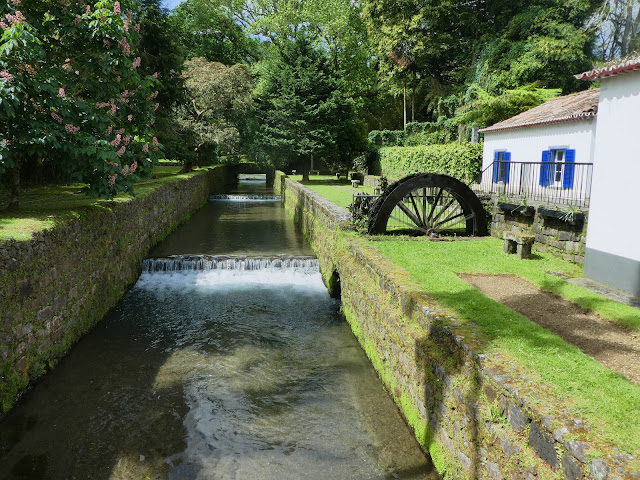
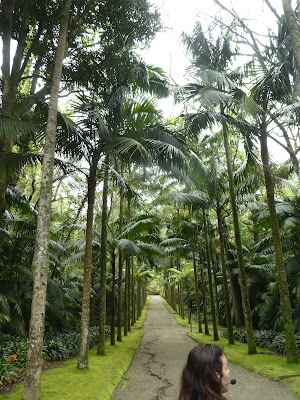
















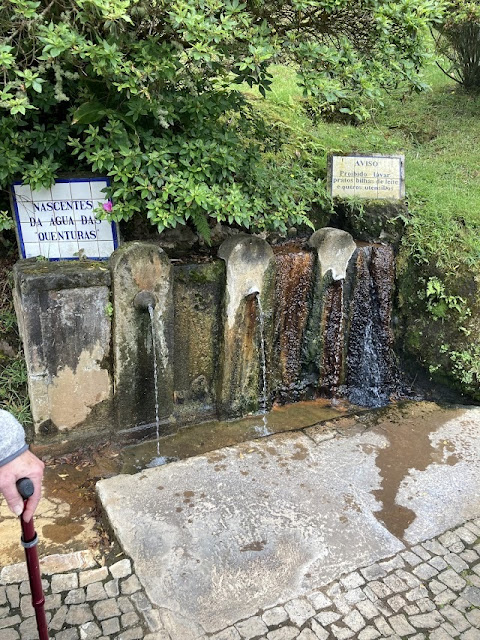



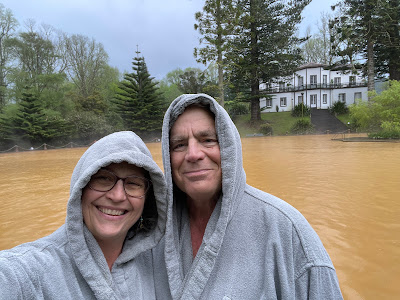

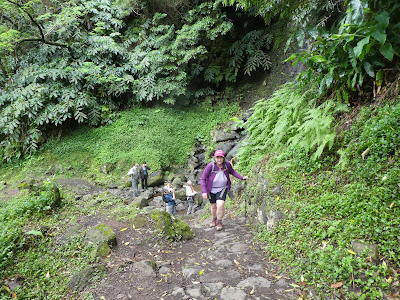







.jpeg)



